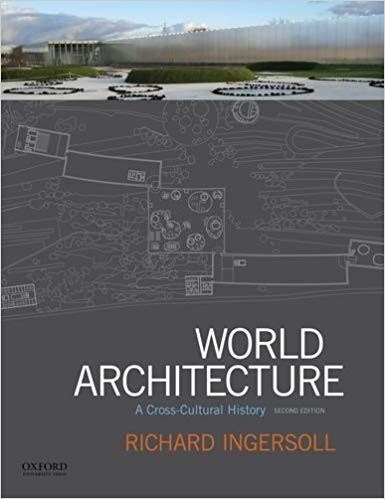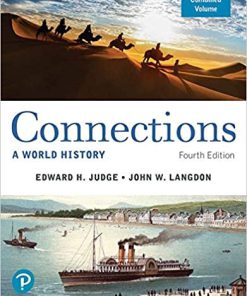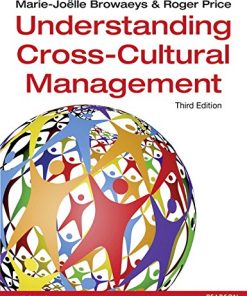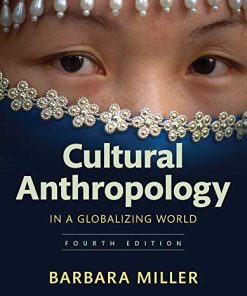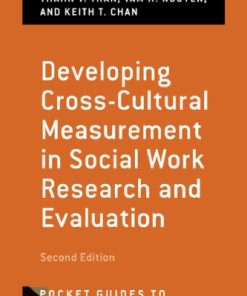(eTextbook PDF) for World Architecture: A Cross-Cultural History 2nd Edition
$50.00 Original price was: $50.00.$25.00Current price is: $25.00.
(eTextbook PDF) for World Architecture: A Cross-Cultural History 2nd Edition – Digital Instant Dowload.
(eTextbook PDF) for World Architecture: A Cross-Cultural History 2nd Edition – Digital Instant Dowload.
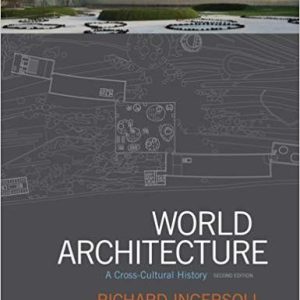
Product details:
- ISBN-10 : 0190625848
- ISBN-13 : 978-0190625849
- Author: Richard Ingersoll
Richard Ingersoll’s World Architecture: A Cross-Cultural History, Second Edition, provides the most comprehensive and contemporary survey in the field. Each chapter within the text’s chronological organization focuses on three unique architectural cultures, giving instructors the flexibility to choose which traditions are the most relevant to their courses. The text also provides students with numerous pedagogical tools, including timelines, comparative maps, a glossary, and text boxes devoted to social factors and specific issues in technology and philosophy. The result is a compendious method for understanding and appreciating the history, cultural significance, beauty, and diversity of architecture from around the world.
Table contents:
Chapter 1 Prehistory
1.1 ARCHITECTURE as a SECOND NATURE: Sacred Caves and Primitive Huts
1.2 VERNACULAR ARCHITECTURE: A Language of Mud, Logs, Hides, and Stones
1.3 MEGALITHS and STONE CIRCLES: Building as Memory
Chapter 2 3000-1500 bce
2.1 CITIES of MESOPOTAMIA: Mud, Gods, and Urbanism
2.2 OLD KINGDOM EGYPT: Architecture for the Afterlife
2.3 THE INDUS VALLEY: Cities without Monuments
Chapter 3 1500-750 bce
3.1 THE AEGEAN in the BRONZE AGE: Labyrinths and Cyclopean Walls
3.2 NEW KINGDOM EGYPT: Axial Temples and Colossal Statues
3.3 BIBLICAL JERUSALEM: Architecture and Memory
Chapter 4 700-200 bce
4.1 SOUTHWEST ASIA and ACHAEMENID PERSIA: A Cycle of Empires
4.2 THE GREEK CITY-STATE: Classical Architecture at the Acropolis and the Agora
4.3 MAURYAN INDIA: Emblems of Peace in Stone
Chapter 5 200 bce-300 ce
5.1 ANCIENT ROME: Governing through Architecture
5.2 ANCIENT CHINA: The Pivot of the Cosmos in Mud and Wood
5.3 ANCIENT MEXICO: Pyramids and Sacrifice
Chapter 6 300-600
6.1 EARLY CHRISTIAN ITALY: The Inward Orientation of the Church
6.2 BYZANTIUM: The Dome as an Act of Faith
6.3 GUPTA INDIA: Rock-Cut Architecture and the Art of Subtraction
Chapter 7 600-800
7.1 THE SPREAD of ISLAM: Hypostyle Mosques and Soaring Minarets
7.2 TANG CHINA and EAST ASIA: Gridded Capitals and Lofty Pagodas
7.3 THE MAYA of CENTRAL AMERICA: Reproducing the Mountain of Creation
Chapter 8 800-1200
8.1 SOUTHEAST ASIA and SOUTHERN INDIA: Lived-in Models of Cosmic Order
8.2 ISLAMIC SPAIN and MOROCCO: Interlacing Forms in al-Andalus and the Maghreb
8.3 WESTERN EUROPE after the ROMAN EMPIRE: Monks, Knights, and Pilgrims
Chapter 9 1200-1350
9.1 THE MERCANTILE MEDITERRANEAN: New Facades for Old Cities
9.2 GOTHIC EUROPE: The Fabric of the Great Cathedrals
9.3 SUB-SAHARAN AFRICA: Living Architecture
Chapter 10 1350-1500
10.1 HUMANIST ITALY: Public Spaces and Private Palaces of the Renaissance
10.2 EASTERN EUROPE: From the Spirit of Wood to the Conventions of Masonry
10.3 PRE-CONTACT AMERICA: Empires of the Sun
Chapter 11 1500-1600
11.1 CHINA after 1000: The Mandate of Heaven Made to Last
11.2 THE OTTOMAN EMPIRE: A Culture of Local Symmetries
11.3 PAPAL ROME: The Fountainhead of Renaissance Classicism
Chapter 12 1600-1700
12.1 ISLAMIC REALMS in CENTRAL ASIA: The Dome of Power, the Garden of Paradise
12.2 CATHOLIC EUROPE: The Settings of Absolutism
12.3 EDO JAPAN: Isolation from the World, Integration with Nature
Chapter 13 1700-1750
13.1 PROTESTANT EUROPE: An Architecture of Essentials
13.2 THE DIFFUSION of the BAROQUE: Life as Theater
13.3 THE AMERICAN COLONIES: Domination and Liberty on the Grid
Chapter 14 1750-1800
14.1 THE PICTURESQUE: Landscapes of the Informal, the Exotic, and the Sublime
14.2 ENLIGHTENMENT EUROPE: Theory, Revolution, and Architecture
14.3 INDUSTRY AND PUNISHMENT: Factories and Warehouses, Prisons and Workhouses
Chapter 15 1800-1850
15.1 AFTER the REVOLUTION: The Ideological Uses of Neoclassicism
15.2 THE GOTHIC REVIVAL: Antimodern and Proto-Nationalist
15.3 THE NEW IRON AGE: The Spread of Metal and Glass Technologies
Chapter 16 1850-1890
16.1 THE RISE of the METROPOLIS: Urbanism and the New Scale of Architecture
16.2 LIFESTYLES and HOUSE FORM: Apartments, Row Houses, Bungalows, and Utopias
16.3 THE BEAUX-ARTS: Eclecticism and Professionalism
Chapter 17 1890-1920
17.1 ARTS and CRAFTS: Design and the Dignity of Labor
17.2 THE TWILIGHT of WESTERN IMPERIALISM: Monuments to the White Man’s Burden
17.3 ART NOUVEAU and the SEARCH for MODERN FORM: Architecture without Precedents
Chapter 18 1920-1940
18.1 AMERICAN SKYSCRAPERS and AUTOMOBILES: Mass Production Meets Individualism
18.2 EUROPEAN MODERNISMS: A Dialogue between Form and Function
18.3 TOTALITARIAN SETTINGS in MODERN EUROPE: Architecture as Propaganda
Chapter 19 1940-1970
19.1 THE INTERNATIONAL STYLE and the ADVENT of the WELFARE STATE: Modernism Becomes Conventional
19.2 THE BIRTH of the THIRD WORLD: Experiments in Postcolonial Architecture
19.3 THE EXPRESSIONIST RESURGENCE: Hybrids amid Mass Culture
Chapter 20 After 1970
20.1 POSTMODERN MOVEMENTS: Populism, Radicalism, and Irony
20.2 MULTINATIONAL PRATICE: Globalization, High Tech, and Hypertecture
20.3 TOWARD an ECOLOGICAL WORLDVIEW: Architecture and the Anthropocene
Glossary
Credits
Index
You may also like…
Education Studies & Teaching - School Education & Teaching
History - European History
Uncategorized
Business & Economics - Human Resources
Politics & Philosophy - Social Sciences


